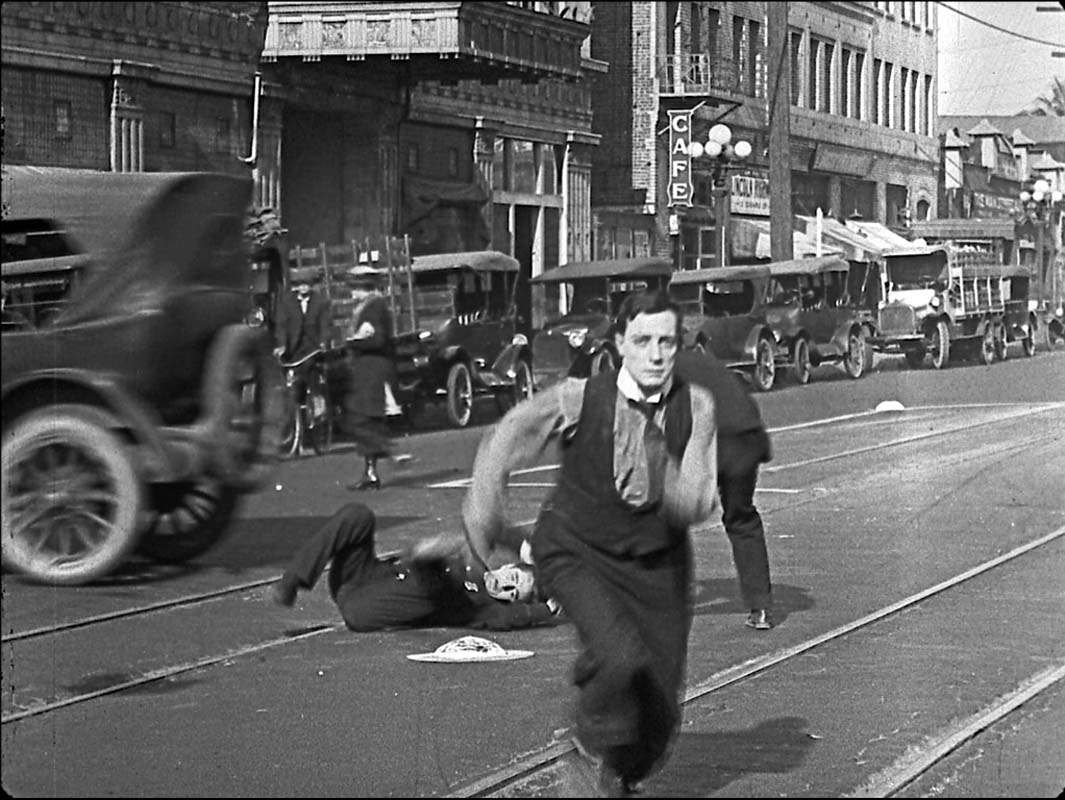
Buster Keaton, still from Cops 1922
Tuesday, May 9, 2017 - 10:30am to 12:30pm
Jaffe 104
Dissertation Defense - Will Schmenner, "How to Hit the Ground: Motion and Measurement in Moving Pictures before the Great Crash"
On December 21, 1914, the Keystone Film Company released Tillie’s Punctured Romance, directed by Mack Sennett. Roughly seven weeks later, depending on where one lived in North America, D.W. Griffith released The Birth of a Nation (1915). For cinema and media studies, this moment launched the form of the classical Hollywood feature-length narrative—the roughly ninety-minutes to three-hour film that since became ubiquitous.
The two movies, despite sharing a longer-than-normal duration, could hardly be more different. The Birth of a Nation purports to be history. President Woodrow Wilson was famously quoted as saying, “It’s like writing history with lightning.” Griffith carefully designed his broad overarching themes about race and gender so that they would drive the narrative. On the other hand, Tillie’s Punctured Romance pieces together a narrative that is often seen as secondary, at best, to the slapstick comedy animating the picture.
My dissertation delves into this difference, which cannot be solely attributed to slapstick’s desire to burlesque Griffith. By building up an argument from the forms that bodily motion took in the shots, across the edits, and in the narrative structure of Buster Keaton’s 1920s features, I argue that cinema and media studies needs to reconsider how it thinks about so-called non-narrative techniques and passive audiences. In short, Keaton worked with the visual habits of his audiences to create a set of non-narrative techniques that make up the very narrative structure of his movies.
By engaging with the bio-politics of bodily motion in the 1920s, Keaton was able to take the well-established visual habits of an industrializing America and tactically alter them to critique how bodies are moved and monitored, who controls the moving of those bodies, and who sets the understanding of efficient, permissible, and effective motions. In the context of The First Red Scare (1920 – 1921) and what the writer John Dos Passos called “the deportations delirium,” Keaton’s comedy offered a more realistic depiction of how disjointed, contingent and chaotic the experience of everyday life could be.

